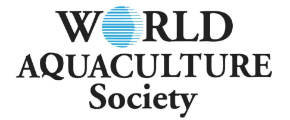MONOGLYCERIDE TECHNOLOGY AND APPLICATION IN AQUACULTURE
Bacterial diseases are major threats to aquaculture that can cause significant losses to the industry in many countries. Acute Hepatopancreatic Necrosis Disease (AHPND, or more commonly known as Early Mortality Syndrome, EMS) in shrimp for example, has damaged some of the shrimp producing countries by billions of dollars of GDP as a result of pathogenic strains of Vibrio parahaemolyticus. Production shifts between countries have largely helped to sustain the supply to global demand but has taken years to recover in some countries with measures to reduce the likelihood of the disease breakout. These include changes to the pond environment by farm management practice, introducing additives to water and feed to reduce the pathogenic bacterial load, or to enhance the immunity of host against diseases.
Many feed additives and technologies have been introduced through the years to address such bacterial problems in aquaculture. One of the most effective solutions being the use of formic acid in either fish or shrimp feed to directly reduce the GI tract pathogen load, or the use of Astaxanthin in shrimp aquaculture to improve the animal's immune parameters to fight against diseases.
One of the recent innovations include the use of monoglycerides of short (C1-C5) to medium chain length (C6-C12) fatty acids that combines the benefits of respective organic acid, with enhanced performance improvement. Further extending the benefits of organic acids, the composition of the organic acids is optimized by the monoglyceride technology to deliver a more specific approach towards different bacterial pathogens, reducing stress factors and thus increasing performance and yield.
In vitro trial results showed that the monoglycerides could inhibit the targeted Vibrios spp. and some other bacterial species, whilst not affecting the healthy bacteria (probiotics or heterotrophs). Tank trials have shown promising results for shrimp and demonstrated up to 30% improvement in survival rates in AHPND challenge studies. On-going pond trials in salmonids and shrimp and the preliminary results point to the direction of improved yield and performance, allowing a greater latitude for farm management.










